Balearic Islands
Balearic Islands, Spain
The Balearic Islands, located in Spain, are a fantastic destination for a holiday. First of all, these islands are incredibly beautiful. With their clear blue waters and sandy beaches, you can relax and enjoy the sunshine.
One reason to visit is the unique culture. The people of the Balearic Islands have their own traditions and celebrations. You can experience lively festivals and try delicious local food.
Moreover, the islands offer a variety of activities. From water sports like snorkeling and sailing to exploring historical sites, there is something for everyone. You won’t get bored!
One unique aspect is the diverse landscapes. You can find rocky cliffs, pine forests, and charming villages. It’s like a mini paradise with a mix of everything.
The locals are friendly and welcoming. They are happy to share their way of life with visitors. You can learn about their customs and maybe even pick up a bit of their language.
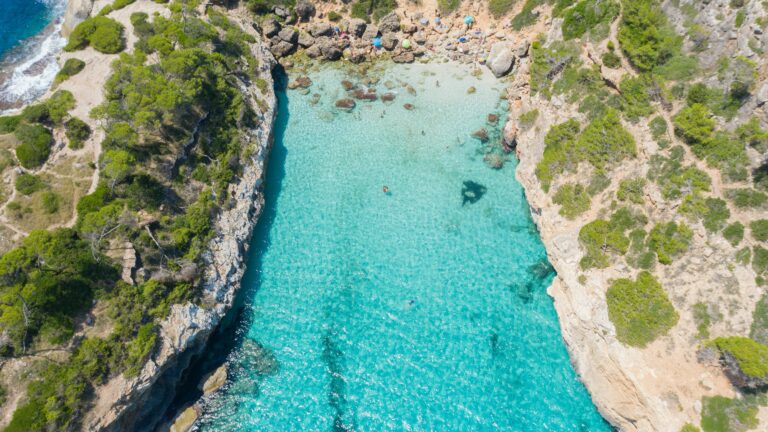
What are the main Balearic Islands?
The Balearic Islands are a group of islands in Spain. There are four main islands: Mallorca, Menorca, Ibiza, and Formentera.
Firstly, Mallorca is known for its beautiful beaches and historic towns. Visitors can explore ancient castles and enjoy the vibrant atmosphere.
Next, Menorca offers tranquility and stunning landscapes. It’s a great place for nature lovers, with its picturesque coves and nature reserves.
Ibiza is famous for its lively nightlife and vibrant energy. People from around the world visit for its clubs, music festivals, and lively parties.
Lastly, Formentera is a peaceful paradise with crystal-clear waters and white sandy beaches. It’s a perfect spot for relaxation and enjoying the natural beauty.
Each island has its own unique charm, making the Balearic Islands a diverse and interesting destination. Whether you seek adventure, relaxation, or cultural experiences, these islands have it all. So, pack your bags and explore the beauty of the Balearic Islands!
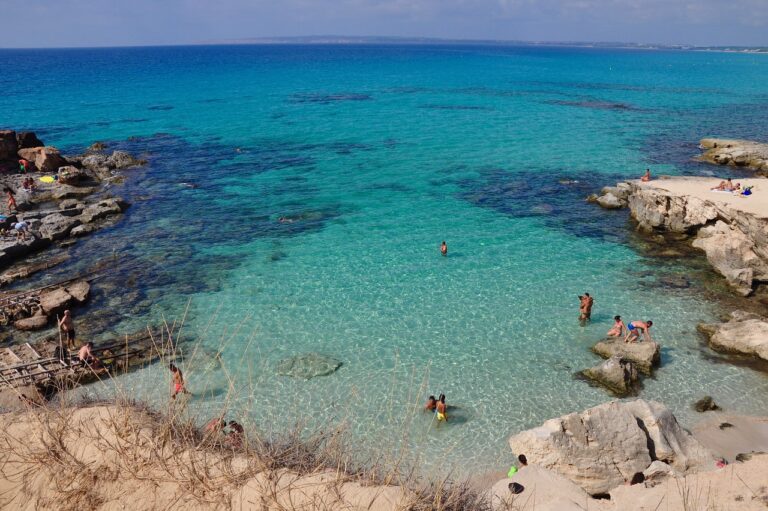
Where is the Balearic Islands?
The Balearic Islands are located in the western part of the Mediterranean Sea, belonging to Spain. These islands are situated southeast of the Iberian Peninsula, surrounded by the clear blue waters of the Mediterranean. The main islands in the archipelago are Mallorca, Menorca, Ibiza, and Formentera. The strategic location of the Balearic Islands makes them easily accessible, attracting visitors with their sunny climate and proximity to the Mediterranean’s diverse landscapes.
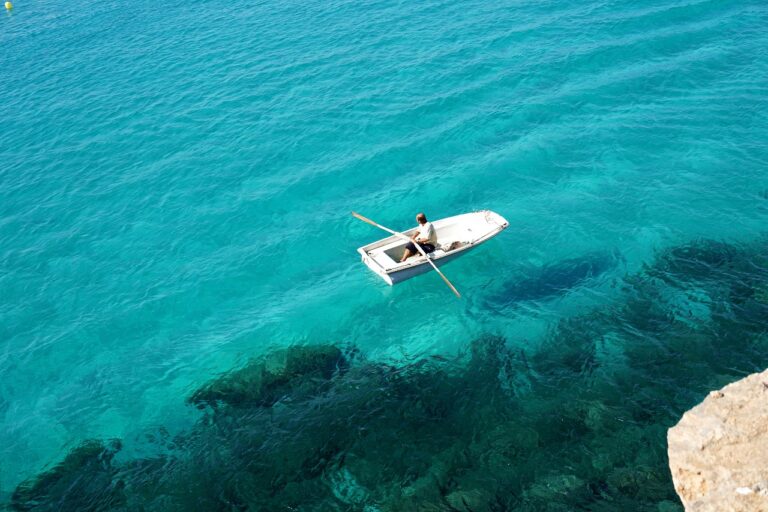
Best places to visit and see in the Balearic Islands
1. Palma de Mallorca (Mallorca): Explore the capital city with its historic sites like the Palma Cathedral and Bellver Castle. Stroll through the charming old town and enjoy the vibrant atmosphere.
2. Serra de Tramuntana (Mallorca): Discover the stunning mountain range, a UNESCO World Heritage site, with picturesque villages like Valldemossa and Deià.
3. Ciutadella (Menorca): Visit the historic city with its medieval architecture, the Cathedral of Menorca, and the charming old town square, Plaça des Born.
4. Mahon (Menorca): Explore the capital city known for its natural harbor, historic buildings, and the impressive Santa Maria Church.
5. Dalt Vila (Ibiza Town, Ibiza): Wander through the UNESCO-listed old town, surrounded by ancient city walls, and enjoy the vibrant nightlife in Ibiza Town.
6. Es Vedrà (Ibiza): Admire the mystical and iconic rock island just off the coast of Ibiza, known for its stunning sunset views.
7. Formentera Beaches (Formentera): Relax on the pristine beaches such as Ses Illetes and Playa de Migjorn, known for their turquoise waters and white sand.
8. Coves del Drach (Mallorca): Explore the enchanting underground caves featuring a subterranean lake and impressive stalactite formations.
9. Cap de Formentor (Mallorca): Enjoy breathtaking views from the northernmost point of Mallorca, with cliffs overlooking the Mediterranean Sea.
10. Cala Macarella (Menorca): Relax on the beautiful sandy beach surrounded by pine trees, turquoise waters, and limestone cliffs.
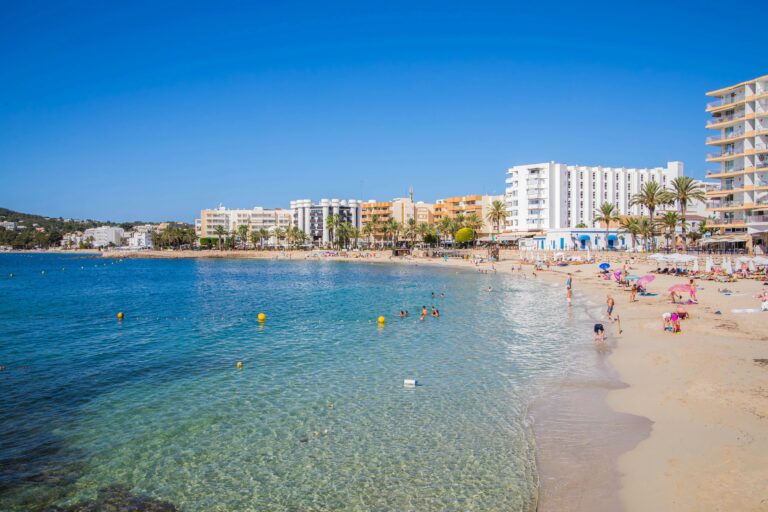
The main Islands of the Balearic
1. Ibiza
2. Mallorca
3 Formentera
4. Menorca
1. Ibiza
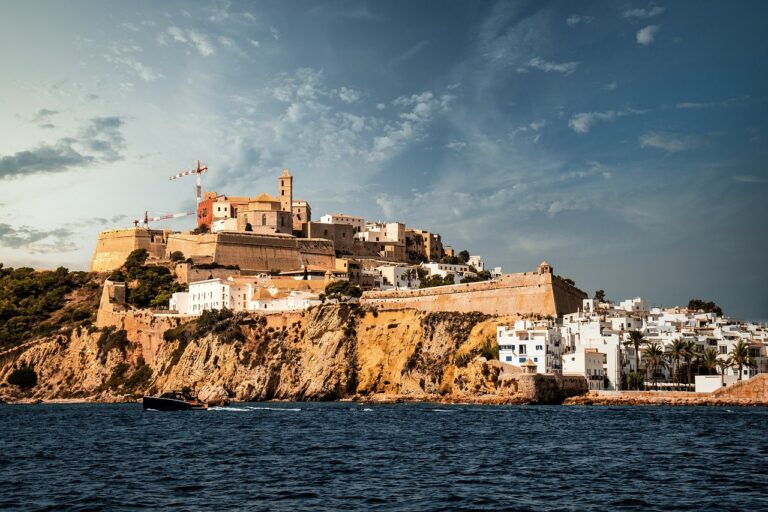
Ibiza, located in Spain, is a fantastic destination that people should consider visiting. Firstly, the island is famous for its lively nightlife. Clubs and parties create a vibrant atmosphere, making it a great place for those who enjoy dancing and socializing.
Moreover, Ibiza is surrounded by beautiful beaches with crystal-clear waters. Visitors can relax on the sandy shores, swim, and enjoy the Mediterranean sun. The beaches, such as Playa d’en Bossa and Talamanca, offer a perfect escape.
One unique aspect of Ibiza is its historical sites. The old town, Dalt Vila, has charming cobblestone streets and ancient architecture. It’s like stepping back in time while exploring the historical fortress and cathedral.
Furthermore, Ibiza has a diverse culture and attracts people from all around the world. You can find a mix of influences in the local cuisine, music, and art. The island’s inclusive atmosphere makes it a welcoming place for everyone.
2. Mallorca
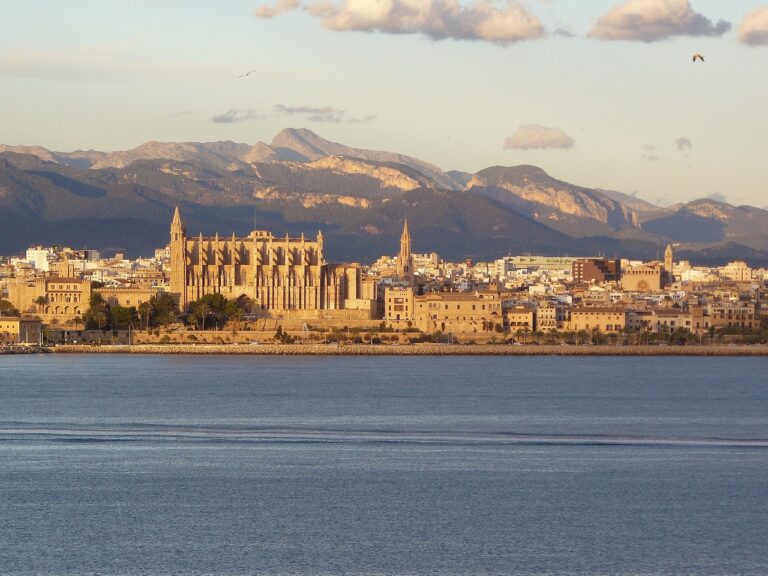
Mallorca, a beautiful island in Spain, is a great place for people to explore. Firstly, the island is known for its stunning beaches. Crystal-clear waters and soft sandy shores make it perfect for swimming, sunbathing, and enjoying the Mediterranean climate.
Additionally, Mallorca offers a variety of activities. You can visit the Serra de Tramuntana mountains for hiking or explore charming villages like Valldemossa. The island’s diverse landscapes provide something for everyone, from nature lovers to adventure seekers.
One unique feature is the historical sites. Palma de Mallorca, the capital, has a majestic cathedral and Bellver Castle. The old town with its narrow streets adds a historical charm to the island, providing a glimpse into its rich past.
Moreover, Mallorca has a vibrant local culture. You can savor traditional Spanish cuisine, experience lively festivals, and Enjoy watersports. The island’s culture is warm and inviting, making visitors feel welcome.
3. Formentera
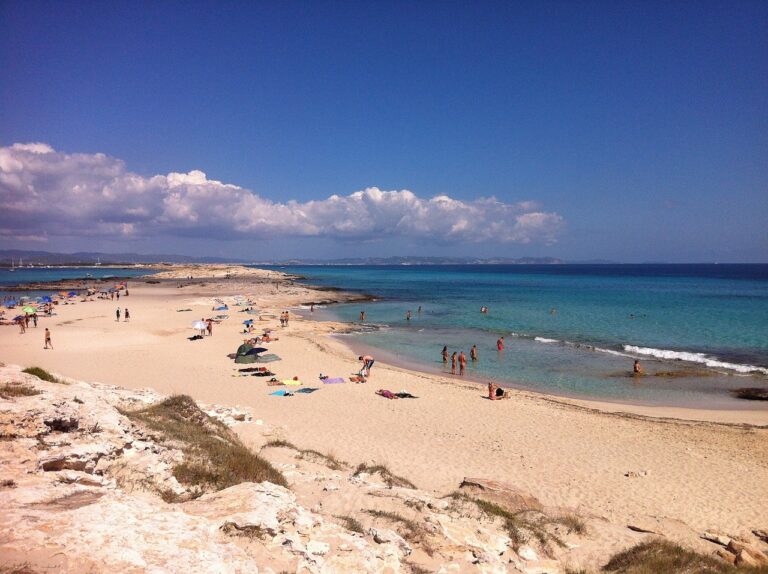
Formentera, a lovely island in Spain, is a must visit destination. Firstly, the island is renowned for its pristine beaches. Clear turquoise waters and powdery white sand create a perfect setting for relaxation and soaking up the Mediterranean sun.
Moreover, Formentera is a haven for nature lovers. The island is home to some of the best beaches in Spain. The island also has breathtaking landscapes, including salt flats, pine forests, and picturesque coves. Exploring these natural wonders provides a serene and peaceful escape.
One unique aspect of Formentera is its tranquility. Compared to its neighboring islands, Formentera offers a quieter and more laid-back atmosphere. This makes it an ideal destination for those seeking a peaceful retreat and a break from the hustle and bustle.
Furthermore, the beaches of Formentera are known for their untouched beauty. Ses Illetes and Playa de Migjorn are among the most famous, boasting clear waters and unspoiled surroundings. These beaches offer a genuine and uncommercialized experience.
4. Menorca
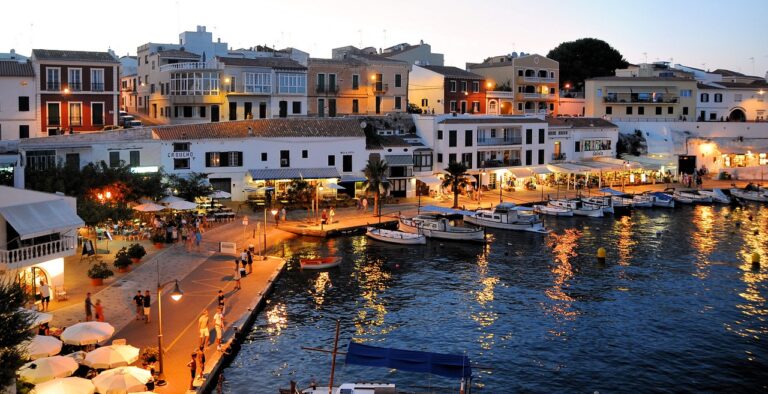
Menorca, a charming island in Spain, is a wonderful destination for various reasons. Firstly, the island is known for its peaceful and serene atmosphere. Unlike its livelier neighbor, Ibiza, Menorca offers a more relaxed environment, making it perfect for a tranquil getaway.
Moreover, Menorca boasts stunning beaches with clear blue waters. Cala Macarella and Cala Mitjana are popular spots for swimming and enjoying the picturesque surroundings. The calm and unspoiled nature of these beaches adds to the island’s charm.
One unique feature of Menorca is its rich history. The island is home to ancient archaeological sites, including Talaiotic settlements and megalithic structures. Exploring these historical treasures provides a glimpse into Menorca’s fascinating past.
Additionally, Menorca is a biosphere reserve, highlighting its commitment to preserving its natural environment. This dedication has led to the conservation of diverse ecosystems, making it a paradise for nature enthusiasts.
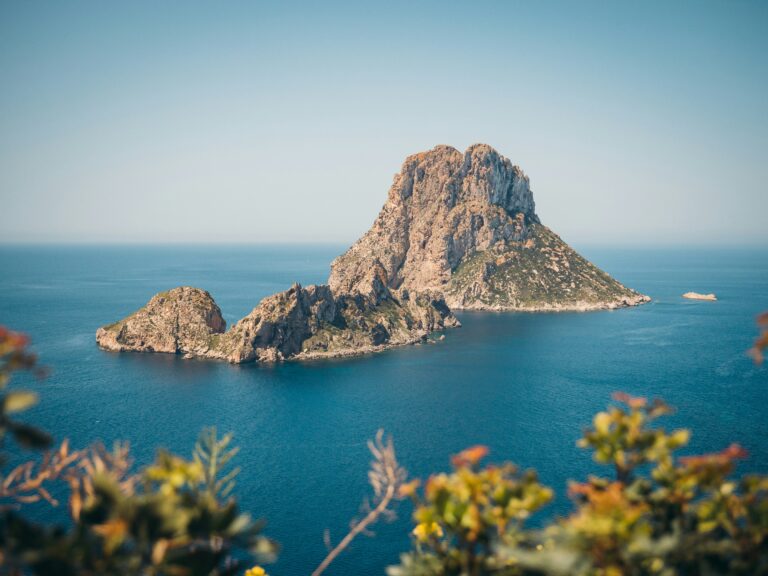
7 Interesting facts about the Balearic Islands
1. Diverse Archipelago: The Balearic Islands consist of four main islands – Mallorca, Menorca, Ibiza, and Formentera. Each island has its own unique character and attractions.
2. Mediterranean Paradise: Nestled in the western Mediterranean Sea, the Balearic Islands boast a delightful Mediterranean climate with warm summers and mild winters. Perfect for those seeking sun-filled vacations.
3. Rich History: The islands have a rich history dating back to ancient times. Visitors can explore archaeological sites, medieval castles, and charming old towns, providing a glimpse into the region’s past.
4. Cultural Fusion: The Balearic Islands have been influenced by various cultures throughout history, creating a vibrant and diverse cultural scene. From traditional festivals to modern art, there’s something for every culture enthusiast.
5. Breathtaking Landscapes: The islands offer diverse landscapes, including sandy beaches, rocky cliffs, and lush greenery. The Serra de Tramuntana mountain range in Mallorca, a UNESCO World Heritage site, is a stunning example.
6. Magnetic Nightlife: Ibiza, one of the Balearic Islands, is renowned for its electrifying nightlife. With world-famous clubs and music festivals, it’s a magnet for those seeking lively entertainment and unforgettable parties.
7. Nature Conservation: Menorca, part of the Balearic archipelago, is a UNESCO Biosphere Reserve, emphasizing the islands’ commitment to environmental conservation. This dedication ensures the preservation of the islands’ natural beauty.
Festivals and Fiestas in the Balearic Islands

1. Sant Joan Festival (Ibiza): Celebrated on June 23rd, Sant Joan is one of the most significant festivals in Ibiza. It marks the summer solstice with bonfires, fireworks, and traditional music and dance.
2. La Nit de l’Art (Palma de Mallorca): This art festival takes place in Palma de Mallorca, usually in September. Galleries, studios, and museums open their doors for exhibitions, showcasing the vibrant art scene on the island.
3. Sant Antoni Abat (Formentera): Celebrated in January, this festival on the island of Formentera honors the patron saint of animals. It involves traditional processions, bonfires, and blessings for pets and livestock.
4. Festes de Sant Joan (Ciutadella, Menorca): Held in June, this festival in Ciutadella, Menorca, features lively parades, traditional horse displays known as “Jaleo,” and a vibrant celebration of the local culture.
5. Corpus Christi (Mahón, Menorca): This religious festival, celebrated in June, involves elaborate processions with horses and traditional attire. The streets are adorned with flowers, creating a colorful and festive atmosphere.
6. Sant Bartomeu Festival (Ibiza): Taking place in August, this festival in San Antonio, Ibiza, celebrates the patron saint of the town. It includes parades, music, dance, and a spectacular fireworks display.
The Gastronomy of the Balearic Islands

Exploring the gastronomy of the Balearic Islands is a delicious journey that everyone should experience. Firstly, the islands boast a diverse culinary scene influenced by Mediterranean flavors and local traditions.
One enticing aspect is the fresh seafood. Being surrounded by the Mediterranean Sea, the Balearic Islands offer a variety of delectable seafood dishes. From grilled fish to seafood paella, visitors can savor the taste of the sea in every bite.
Moreover, the islands are renowned for their local specialties. Sobrassada, a cured sausage, and Ensaimada, a sweet pastry, are iconic Balearic delights. Trying these unique treats provides a genuine taste of the islands’ culinary heritage.
The use of fresh and locally sourced ingredients is a highlight of Balearic cuisine. Fruits, vegetables, and olive oil play a significant role in many dishes, contributing to the freshness and authenticity of the meals.
A distinctive feature is the fusion of flavors from various cultures. The islands’ history of being influenced by different civilizations is reflected in their food. Arabic, Catalan, and Spanish influences come together to create a gastronomic experience that is both diverse and delightful.
5 Unusual and Fun Things to Do in the Balearic Islands
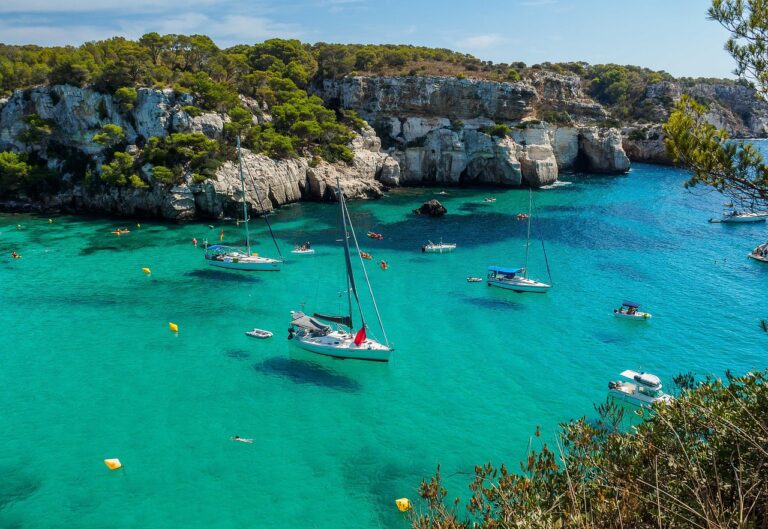
1. d’en Xoroi (Menorca): Visit this remarkable cave-turned-nightclub in Menorca. Nestled in a cliff, it offers breathtaking views of the Mediterranean. Dancing and enjoying music in this unusual setting make for a memorable experience.
2. Kayaking in Caves (Ibiza): Take a kayaking adventure to discover the hidden sea caves around the coast of Ibiza. Paddling through crystal-clear waters and exploring secret caves adds an element of excitement to your island visit.
3. Wine Tasting in Binissalem (Mallorca): Explore the wine culture in Mallorca by visiting the Binissalem wine region. Sample local wines and learn about the winemaking process while enjoying the picturesque vineyards.
4. Floating in the Salt Pools (Formentera): Experience the unique sensation of floating effortlessly in the natural salt pools of Formentera. These pools, formed by the evaporation of seawater, offer a relaxing and buoyant experience.
5. Art in the Streets of Palma (Mallorca): Discover the vibrant street art scene in Palma de Mallorca. Wander through the streets to find colorful murals, graffiti, and artistic expressions that add a creative touch to the city.
Top Cultural Attractions On The Balearic Islands
Palma Cathedral (La Seu, Mallorca)
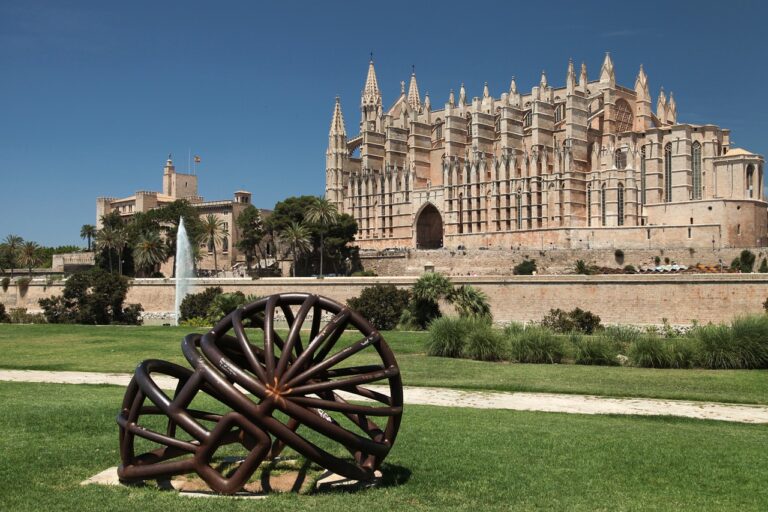
Palma Cathedral, also known as La Seu, in Mallorca, is a must-visit destination for various reasons. Firstly, it is a stunning Gothic cathedral with impressive architecture and intricate details.
The cathedral is a symbol of Palma de Mallorca, standing tall and majestic in the heart of the city. As visitors approach, they are greeted by intricate stone carvings, flying buttresses, and a breathtaking facade that showcase the craftsmanship of its builders.
Inside, La Seu boasts magnificent stained glass windows that fill the interior with a kaleidoscope of colors when sunlight pours in. These windows depict biblical scenes and add a sense of grandeur to the cathedral’s atmosphere.
What makes Palma Cathedral truly unique is its historical significance. Construction began in the 13th century, and the cathedral has witnessed centuries of Mallorcan history. Its enduring presence and the stories it holds make it a living testament to the island’s rich past.
Ibiza old town

Ibiza Old Town is a wonderful place to visit in the Balearic Islands, and there are several compelling reasons to explore its charming streets. Firstly, it is a UNESCO-listed site, recognized for its historical and cultural significance.
As you stroll through the narrow cobblestone streets, you’ll encounter a blend of ancient architecture and modern vibrancy. The old town, also known as Dalt Vila, is surrounded by sturdy medieval walls that have withstood the test of time.
One reason to visit is the captivating views. Dalt Vila is perched on a hill, offering panoramic views of the Mediterranean Sea. It’s a perfect spot to enjoy breathtaking sunsets and capture picturesque moments.
Moreover, the old town is home to historical landmarks. The Ibiza Cathedral, located at the highest point, is a notable attraction with its impressive architecture and stunning views from the top. The nearby museums and art galleries also provide insights into the island’s rich history.
Ibiza Old Town is not just about history; it has a lively atmosphere. The streets are filled with boutiques, cafes, and vibrant markets, creating a perfect blend of past and present. Visitors can explore local shops, indulge in authentic cuisine, and experience the warm hospitality of the locals.
Talaiotic Sites
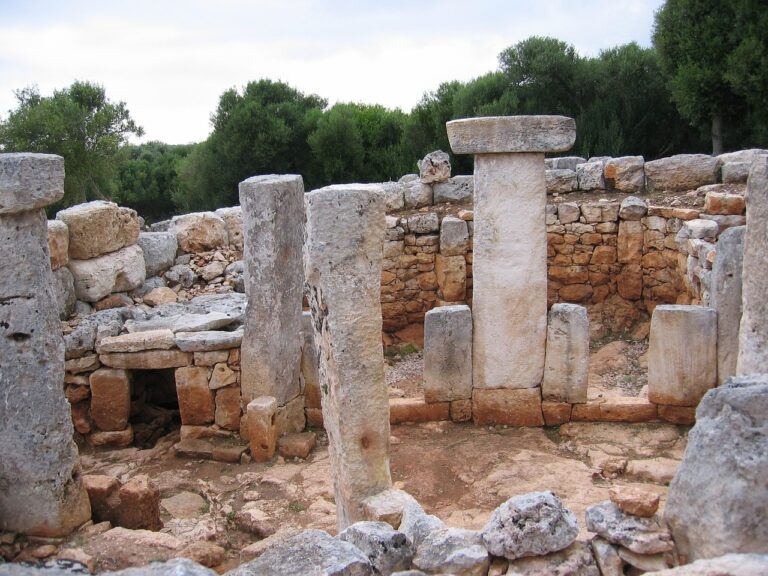
The Talaiotic sites in Menorca are fascinating places to explore, and there are compelling reasons to visit these ancient remnants. Firstly, these sites are remnants of prehistoric settlements, providing a glimpse into the lives of the early inhabitants of the islands.
As you wander through these archaeological treasures, you’ll discover impressive megalithic structures, including talaiots (stone towers), taulas (T-shaped stone structures), and navetas (burial chambers). The engineering prowess of these ancient builders is evident in the intricate design and construction of these sites.
One reason to visit these Talaiotic sites is their historical significance. Dating back to the Bronze Age, they offer a tangible connection to the island’s past. Exploring these ancient settlements allows visitors to imagine the daily lives, rituals, and traditions of the people who once inhabited the Balearic Islands.
